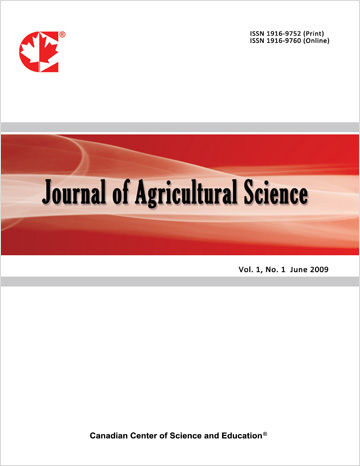Infestation of Insects’ Pest on Six Sorghum Sorghum bicolor (L.) Moench Cultivars at INRAN Station and in Farmers’ Fields of Maradi Region, Niger
- Laouali Amadou
- Ousseina Abdoulaye
- Ibrahim Boukari Baoua
- Mahaman Nassirou Oumarou
- Illa Nouhou Koudou
- H. Ouma Kaltoum Adamou
- O. Bachar Moudi
- Roufai Yarifou
- Laouali Karimoun
- M. Walouma Laouel
- K. Samira Chaibou
- Souleymane Lamine
Abstract
Sorghum, Sorghum bicolor (L.) Moench, is a staple food for the Sahelian population. This crop faces several constraints, including insect pests. A study was carried out at INRAN-CERRA Maradi station and in farmers’ fields during 2021, 2022 and 2023 cropping seasons. The aim of this study is to survey the sorghum insect pests and determining their effects on sorghum cultivars. A Fisher block design with three (3) replicates was established on station, and a complete randomized design with two (2) replicates in farmers’ environment. Observations were done on six (6) improved sorghum cultivars: Mota Maradi (MM), Sepon 82, SSD35, Matché Da Koumya (MDK), IRAT 204 and 90SN7 and one local variety Makaho Da Wayo (MDW) in the farming environment to follow the insect dynamics. The study identified (10) species belonging to five insect orders, the most important were Eurystylus oldi Poppius, Stenodiplosis sorghicola Coquillett, Locris ruben Erichson and Poophilus costalis Walker. The dominant species on station were L. ruben and P. costalis, with proportions of 59.06% and 19.13% respectively. The two species were the most recorded in farming environment, at the rate of 41.73% and 29.19% respectively. They were followed by S. sorghicola, with 18.61% of insects’ density in farmers’ field. The densities of S. sorghicola and E. oldi were higher on Sepon 82 variety, while L. ruben and P. costalis were higher on local variety. Sorghum yields varied depending the cultivar and the cropping season, it ranged from 38 to 1834.31kg/ha. The MDK variety obtained the highest yield in 2021 and 2022 while in 2023 MM produced the highest quantity of grain on station and in rural area. The SSD35 was intermediate during the three years at the two experimental sites. The results of this study may help to strengthen integrated management options for sorghum insect’s pest and will enable farmers to choose and grow the higher yielding or less infested varieties.
- Full Text:
 PDF
PDF
- DOI:10.5539/jas.v17n3p64
Journal Metrics
- h-index: 67
- i10-index: 839
- WJCI (2023): 0.884
- WJCI Impact Factor (2023): 0.196
Index
- AGRICOLA
- AGRIS
- BASE (Bielefeld Academic Search Engine)
- Berkeley Library
- CAB Abstracts
- ChronosHub
- CiteSeerx
- CNKI Scholar
- Copyright Clearance Center
- CrossRef
- DESY Publication Database
- DTU Library
- e-Library
- EBSCOhost
- EconPapers
- Elektronische Zeitschriftenbibliothek (EZB)
- EuroPub Database
- Excellence in Research for Australia (ERA)
- Google Scholar
- Harvard Library
- IDEAS
- iDiscover
- Jisc Library Hub Discover
- JournalTOCs
- KindCongress
- LIVIVO (ZB MED)
- LOCKSS
- Max Planck Institutes
- Mendeley
- MIAR
- Mir@bel
- NLM Catalog PubMed
- Norwegian Centre for Research Data (NSD)
- Open J-Gate
- OUCI
- PKP Open Archives Harvester
- Polska Bibliografia Naukowa
- Qualis/CAPES
- RefSeek
- RePEc
- ROAD
- ScienceOpen
- Scilit
- SCiNiTO
- Semantic Scholar
- SHERPA/RoMEO
- Southwest-German Union Catalogue
- Standard Periodical Directory
- Stanford Libraries
- SUDOC
- Swisscovery
- Technische Informationsbibliothek (TIB)
- Trove
- UCR Library
- Ulrich's
- UniCat
- Universe Digital Library
- WorldCat
- WRLC Catalog
- Zeitschriften Daten Bank (ZDB)
Contact
- Anne BrownEditorial Assistant
- jas@ccsenet.org
